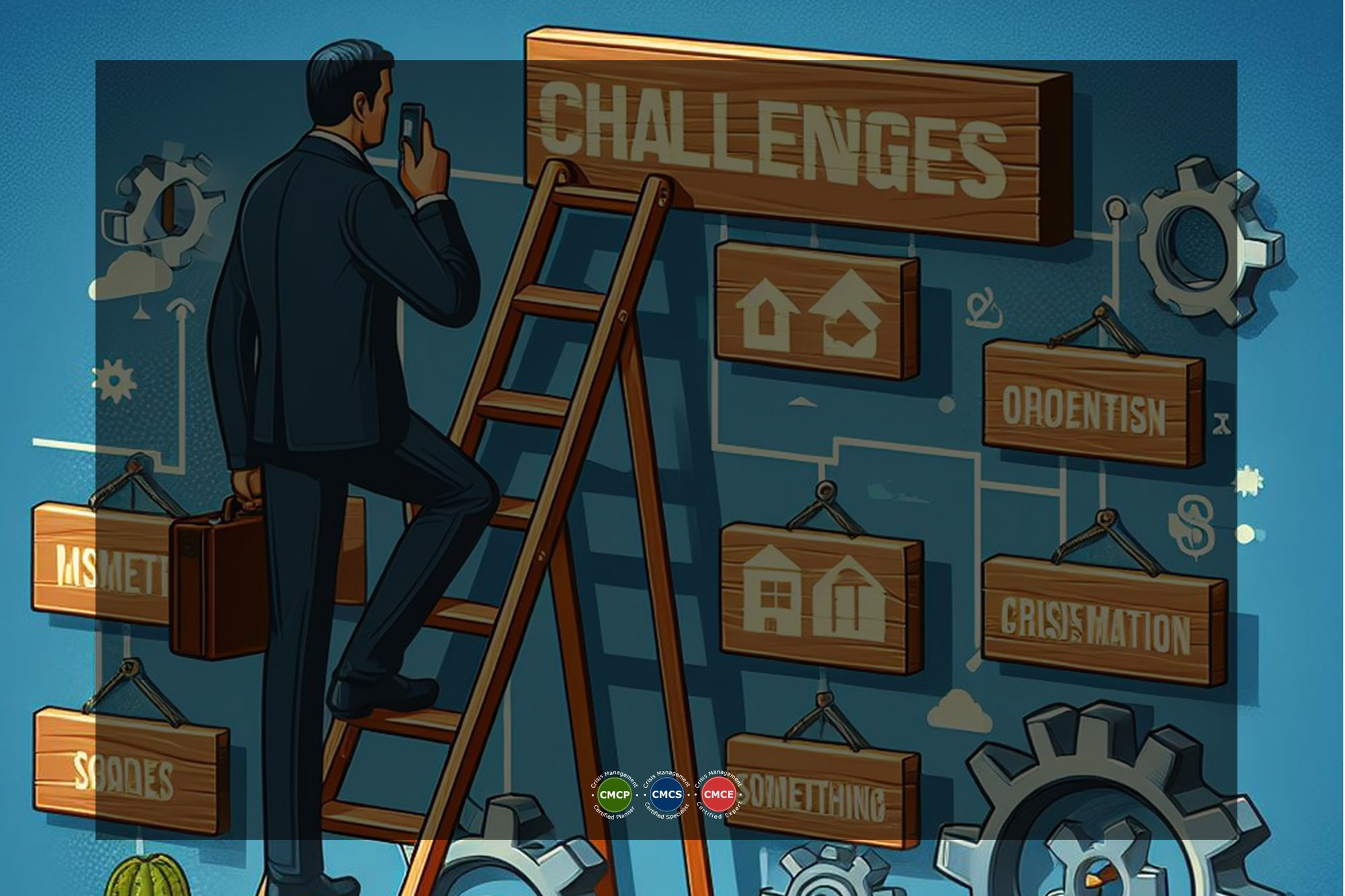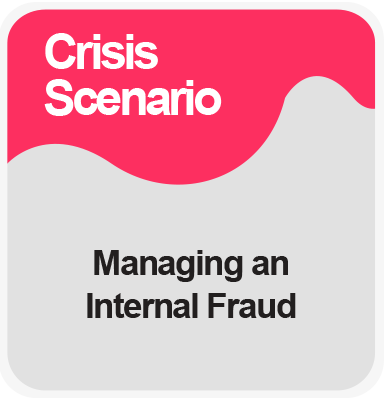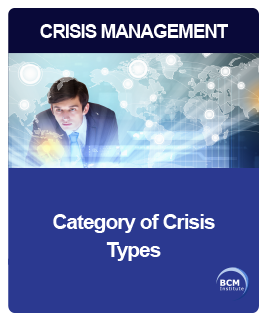 How to Integrate Risk Management, Business Continuity Management & Crisis Management Effectively
How to Integrate Risk Management, Business Continuity Management & Crisis Management Effectively
 In today's dynamic and interconnected world, organisations face a constantly evolving landscape of threats. From natural disasters and cyberattacks to pandemics and economic downturns, the potential for disruption is ever-present.
In today's dynamic and interconnected world, organisations face a constantly evolving landscape of threats. From natural disasters and cyberattacks to pandemics and economic downturns, the potential for disruption is ever-present.
These challenges underscore the critical need for a robust and integrated approach to risk management (RM), business continuity management (BCM), and crisis management (CM). By proactively identifying, assessing, and mitigating potential risks, organisations can enhance their resilience, minimise the impact of disruptions, and ensure business continuity in the face of unforeseen challenges.
An integrated approach goes beyond simply having separate plans for each area. It requires a holistic view where risk assessments inform the development of BCM Plans, and both are seamlessly integrated into the organisation's overall crisis response strategy. This interconnectedness ensures that the organisation is prepared for potential disruptions and equipped to respond effectively and efficiently when they occur.
Furthermore, fostering a culture of preparedness is paramount. This involves educating employees on their roles and responsibilities during a crisis, establishing clear communication channels, and conducting regular drills and exercises to test the effectiveness of response plans.
By empowering employees and fostering a sense of collective responsibility, organisations can significantly enhance their ability to navigate challenges and emerge stronger from disruptive events.
This article will explore the key elements of an integrated approach in greater depth and provide practical guidance on how organizations can effectively integrate RM, BCM, and CM to enhance their resilience and thrive in an uncertain world.
1. Establish a Strong Foundation
This crucial first step lays the groundwork for a robust and integrated approach to RM, BCM, and CM. It entails a thorough understanding of potential threats and a clearly defined framework for addressing them.
Unified Risk Assessment
- Comprehensive Scope: Beyond traditional risk assessments that focus solely on internal threats. Consider a wide range of potential disruptions, including:
- Natural Disasters: Earthquakes, floods, hurricanes, wildfires
- Technological Disruptions: Cyberattacks, data breaches, system failures
- Supply Chain Disruptions: Supplier failures, transportation delays, geopolitical instability
- Economic Downturns: Recessions, inflation, market volatility
- Pandemics and Health Emergencies: Outbreaks of infectious diseases
- Reputational Damage: Negative publicity, social media crises
- Human Factors: Employee misconduct, workplace violence
- Legal and Regulatory Changes: New laws, compliance issues
- Cross-functional collaboration: Involve representatives from all key departments, including IT, finance, operations, human resources, legal, and marketing. This ensures a comprehensive and holistic view of potential risks.
- Data-Driven Approach: Utilise data analytics and other tools to identify emerging threats and assess their potential impact. This may involve analysing historical data, conducting surveys, and monitoring industry trends.
- Scenario Planning: Develop and analyse different scenarios to understand the potential consequences of various threats. This helps to identify critical vulnerabilities and develop appropriate response strategies.
Develop a Risk Register
- Centralised Repository: Create a centralised and easily accessible database to document all identified risks.
- Key Information: For each risk, include:
- Description of the risk
- Potential impact on the organisation (financial, operational, reputational)
- Likelihood of occurrence
- Existing controls and mitigation measures
- Risk owner (the individual or team responsible for managing the risk)
- Risk tolerance level (the level of risk that the organisation is willing to accept)
- Regular Updates: The risk register should be a living document regularly reviewed and updated to reflect changes in the internal and external environment.
Define Clear Roles and Responsibilities:
- Establish a Crisis Management Team: Assemble a cross-functional team overseeing crisis response activities. This team should include representatives from key departments, such as IT, communications, security, and human resources.
- Assign Clear Roles: Define specific roles and responsibilities for each crisis management team member. This includes identifying key decision-makers, communication liaisons, and technical experts.
- Develop a Communication Plan: Establish clear communication channels and protocols for internal and external stakeholders. This includes identifying key messages, designating spokespersons, and establishing procedures for disseminating information during a crisis.
- Document Decision-Making Processes: Establish clear procedures for decision-making during a crisis. This ensures that decisions are made quickly and effectively while also maintaining accountability.
By establishing a strong foundation through comprehensive risk assessment, a well-maintained risk register, and clearly defined roles and responsibilities, organisations can effectively identify, assess, and mitigate potential threats, enhancing their resilience and preparedness for unexpected events.
2. Integrate Processes
This phase focuses on creating a seamless and cohesive approach to RM, BCM, and CM. It involves aligning these processes to ensure they work together effectively and efficiently.
Risk-Informed BCM
- Prioritise Critical Business Functions: Identify and prioritize critical business functions for the organisation's survival and success. This may include core operations, revenue-generating activities, customer service, and IT infrastructure.
- Risk-Based Mitigation Strategies: Develop and implement business continuity plans that address the risks identified in the risk assessment. This may involve:
- Business Impact Analysis (BIA): Conduct detailed analyses to understand the potential impact of various disruptions on critical business functions.
- Developing Recovery Strategies: Create alternative strategies for continuing operations during a disruption, such as:
- Workarounds: Temporary solutions to maintain essential functions.
- Redundancy: Creating backups or alternative systems to ensure continued operation.
- Relocation: Shifting operations to a secondary location.
- Outsourcing: Contracting with third-party vendors to provide essential services.
- Testing and Maintenance: Regularly test and update business continuity plans to ensure their effectiveness and relevance.
- Business Impact Analysis (BIA): Conduct detailed analyses to understand the potential impact of various disruptions on critical business functions.
BCM-Driven Crisis Response
- Integrate Crisis Communication: Incorporate crisis communication plans into the overall BCM framework. This ensures clear and consistent messages are communicated to internal and external stakeholders during a crisis.
- Establish Clear Incident Response Procedures: Develop and document clear procedures for responding to various incidents. This includes:
- Incident Command System: Establish a clear chain of command and communication protocols for incident response management.
- Escalation Procedures: Define clear procedures for escalating incidents to higher levels of management as needed.
- Post-Incident Review: Conduct thorough post-incident reviews to identify lessons learned and areas for improvement.
Continuous Improvement
- Regular Reviews: Regularly review and update risk assessments, business continuity plans, and crisis response procedures to ensure they remain relevant and effective in the face of changing threats and circumstances.
- Lessons Learned: Incorporate lessons learned from past incidents, industry best practices, and changes in the internal and external environment into the risk management, BCM, and crisis management frameworks.
- Technology Integration: Leverage technology to streamline and improve the integration of these processes. This may include using risk management software, communication platforms, and data analytics tools.
By integrating RM, BCM, and CM processes, organizations can create a more proactive and resilient approach to managing threats. This integrated approach ensures that the organization is well-prepared to respond effectively to disruptions, minimise their impact, and quickly recover to normal operations.
3. Foster a Culture of Preparedness
Creating a culture of preparedness is essential for ensuring that everyone within the organization understands their role in RM, BCM, and CM response. This involves proactive engagement, training, and open communication.
Employee Training
- Tailored Training: Develop and deliver training programs tailored to each employee's roles and responsibilities. This may include:
- Crisis Communication Training: Educate employees on communicating effectively during a crisis internally and externally.
- Emergency Procedures Training: Train employees on emergency procedures, such as evacuation plans, lockdown procedures, and first aid.
- Technical Skills Training: Provide training on specific technologies, such as communication tools, data backup systems, and remote work solutions.
- Incident Reporting Training: Train employees on reporting potential incidents and suspicious activities.
- Regular Refresher Courses: Conduct regular refresher courses to reinforce key concepts and ensure that employees remain up-to-date on the latest procedures and best practices.
- Hands-on Simulations: Incorporate hands-on simulations and exercises to provide employees with practical experience responding to incidents.
Communication and Collaboration
- Open Communication Channels: Establish clear and open communication channels across all levels of the organization. Encourage employees to raise concerns and share information about potential risks.
- Regular Communication: Regularly communicate with employees about potential threats, the organization's preparedness efforts, and the importance of individual preparedness.
- Cross-functional collaboration: Foster collaboration among different departments to ensure everyone works together effectively to address potential risks.
Regular Testing and Exercises
- Tabletop Exercises: Conduct tabletop exercises to simulate different incidents and test the effectiveness of the organization's response plans.
- Functional Exercises: Conduct functional exercises to test specific aspects of the response plan, such as activating emergency communications systems or relocating critical operations.
- Full-Scale Drills: Conduct full-scale drills to test the organization's overall response capabilities in a realistic and challenging environment.
- Debriefing Sessions: Conduct debriefing sessions after each exercise to identify areas for improvement and refine response plans.
Leadership Commitment
- Visible Support: Demonstrate visible support for risk management, business continuity, and crisis management initiatives from senior leadership.
- Resource Allocation: Allocate adequate resources to support preparedness efforts, including training, technology, and personnel.
- Accountability: Hold individuals and teams accountable for their roles and responsibilities in risk management and crisis response.
By fostering a culture of preparedness, organizations can empower their employees to play an active role in risk mitigation and crisis response. This can significantly enhance the organisation's resilience and ability to navigate unexpected challenges.
4. Leverage Technology
Technology is crucial in enhancing the effectiveness of RM, BCM, and CM.
Organisations can improve efficiency, streamline processes, and enhance their preparedness by leveraging the right tools.
Utilise Risk Management Software
- Automation: Automate repetitive tasks, such as data entry, risk scoring, and report generation, freeing valuable time for more strategic activities.
- Centralised Repository: Provide a centralised repository for all risk-related information, including risk assessments, controls, and action plans.
- Data Analysis and Reporting: Utilise data analytics capabilities to identify emerging threats, assess risk trends, and generate insightful reports for decision-making.
- Integration with Other Systems: Integrate with other business systems, such as enterprise resource planning (ERP) and customer relationship management (CRM) systems, to gain a more comprehensive view of organizational risks.
Invest in Communication Tools
- Secure and Reliable Communication: Invest in secure and reliable communication tools, such as enterprise social media platforms, mass notification systems, and video conferencing software, to facilitate rapid communication during a crisis.
- Remote Work Capabilities: Ensure employees have the necessary technology and access to remote work solutions, such as virtual private networks (VPNs) and cloud-based applications, to maintain business continuity during disruptions.
Implement Data Backup and Recovery Solutions
- Data Backup and Recovery: Implement robust data backup and recovery procedures to protect critical data from loss or damage. This may include:
- Regular Backups: Regularly back up critical data to off-site locations.
- Data Redundancy: Implement data redundancy strategies, such as mirroring and replication, to ensure data availability.
- Disaster Recovery Sites: Establish disaster recovery sites to recover IT systems and data during a rapid disruption rapidly.
Embrace Emerging Technologies
- Artificial Intelligence (AI) and Machine Learning: Utilize AI and machine learning to analyze large volumes of data, identify emerging threats, and predict potential disruptions.
- Internet of Things (IoT): Leverage IoT sensors and devices to monitor critical infrastructure and detect potential threats in real-time.
- Blockchain Technology: Utilise blockchain technology to enhance data security and transparency and improve the traceability of critical assets.
By effectively leveraging technology, organizations can significantly enhance their ability to manage risks, maintain business continuity, and respond effectively to crises.
This includes automating tasks, improving communication, protecting critical data, and embracing emerging technologies to gain a competitive advantage.
Note: It is vital to ensure that the use of technology is aligned with the organisation's overall RM, BCM, and CM strategy.
This includes conducting thorough risk assessments of technology-related risks and implementing appropriate security measures to protect sensitive data and systems.
5. Focus on Continuous Improvement
Continuous improvement is the cornerstone of a successful and resilient organisation. It's not a one-time event but an ongoing evaluation, refinement, and adaptation cycle.
Conduct Post-Incident Reviews
- After every crisis event, conduct thorough post-incident reviews. These reviews should go beyond simply documenting what happened. They should delve into:
- Identifying root causes: What were the underlying factors that contributed to the incident?
- Analysing the response: How effective were the response plans and procedures?
- Identifying areas of improvement: Where were there gaps in communication, resource allocation, or decision-making?
- Capturing lessons learned: Documenting key takeaways and insights for future planning and training.
Stay Informed
- The threat landscape is constantly evolving. To stay ahead, organizations must stay informed about:
- Emerging threats: New and evolving cyber threats, geopolitical risks, pandemics, and other potential disruptions.
- Industry best practices: Benchmarking against industry best practices in risk management, BCM, and crisis management.
- Regulatory changes: Keeping abreast of new laws, regulations, and compliance requirements.
- This can be achieved through:
- Industry conferences and webinars
- Professional development courses and certifications
- Subscriptions to relevant publications and industry news sources
- Networking with other industry professionals
Embrace a Culture of Innovation
- Encourage a culture of innovation and continuous improvement within the organisation.
- Implement suggestion boxes or other mechanisms for employees to share ideas for improvement.
- Recognise and reward employees who contribute to improving RM, BCM, and CM response capabilities.
- Foster a learning environment where experimentation and adaptation are encouraged.
By focusing on continuous improvement, organizations can ensure that their RM, BCM, and CM frameworks remain relevant, effective, and adaptable to the ever-changing challenges of the modern business environment.
This ongoing commitment to improvement will enhance the organization's resilience, drive innovation, and create a more sustainable and prosperous future.
Summing Up ...
In conclusion, effectively integrating RM, BCM, and CM is no longer an option but necessary for organisations operating in today's complex and volatile environment. By proactively identifying and addressing potential threats, developing robust business continuity plans, and establishing effective crisis response procedures, organizations can enhance their resilience, minimise the impact of disruptions, and protect their critical assets.
This integrated approach requires a strong foundation built upon comprehensive risk assessments, a well-maintained risk register, and clearly defined roles and responsibilities.
Furthermore, continuous improvement is essential. Regularly reviewing and updating risk assessments, BCM Plans and crisis response procedures based on lessons learned from past incidents and emerging threats is crucial for maintaining effectiveness.
Ultimately, the success of an integrated approach depends on strong leadership commitment, employee engagement, and a culture of preparedness.
Organisations can empower employees to play an active role in risk mitigation and crisis response by fostering a culture of awareness, training, and open communication. This collective effort will enhance the organisation's ability to withstand disruptions, strengthen its reputation, build trust with stakeholders, and ensure long-term sustainability in an increasingly uncertain world.







![[BL-CM] [5] Register](https://no-cache.hubspot.com/cta/default/3893111/82024308-16f4-4491-98be-818a882c6286.png)


![Email to Sales Team [BCM Institute]](https://no-cache.hubspot.com/cta/default/3893111/3c53daeb-2836-4843-b0e0-645baee2ab9e.png)





![[CM] Disclaimers and Usage of eBook](https://3893111.fs1.hubspotusercontent-na1.net/hubfs/3893111/Disclaimer%20and%20Proper%20Usage%20Morepost/IC_CM_Legal%20Disclaimer.png)

![[CM] [ISO] [T] Leading Crisis Management: A Collaborative Effort Between Corporate Security and BCM](https://3893111.fs1.hubspotusercontent-na1.net/hubfs/3893111/MTE%20ISO22361%20Implementation%20Morepost/IC_MTE%20ISO22361_A%20Collaborative%20Effort%20Between%20Corporate%20Security%20and%20BCM.jpg)
![[CM] [ISO] [T] Building a Resilient Crisis Management Program with ISO22361](https://3893111.fs1.hubspotusercontent-na1.net/hubfs/3893111/MTE%20ISO22361%20Implementation%20Morepost/IC_MTE%20ISO22361_Build%20More%20Resilient%20Program.png)

![[CM] [ISO] [T] Challenges For A Traditional Crisis Management Practice To Move Into ISO 22361](https://3893111.fs1.hubspotusercontent-na1.net/hubfs/3893111/MTE%202024%20Banner/MTE%20Jan%202025/MTE%20Jan%2025_Facebook%20Banner.jpg)
![[CM] [ISO] [T] Enhancing Government Resilience: Applying ISO 22361 for Effective Crisis Management](https://3893111.fs1.hubspotusercontent-na1.net/hubfs/3893111/MTE%20ISO22361%20Implementation%20Morepost/IC_MTE%20ISO22361_Enhance%20Government%20Resilience.png)
![[CM] [ISO] ISO 22336 Introduction](https://3893111.fs1.hubspotusercontent-na1.net/hubfs/3893111/ISO22361%20Morepost/IC_CM_ISO22361_ISO%2022361%20Simplified.png)
![[CM] [ISO] [T] Pros and Cons of ISO 22361 CM Certification](https://3893111.fs1.hubspotusercontent-na1.net/hubfs/3893111/MTE%20ISO22361%20Implementation%20Morepost/IC_MTE%20ISO22361_Pros%20and%20Cons.png)


